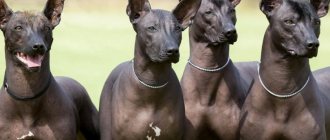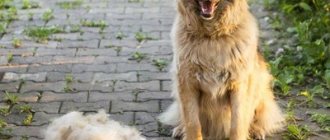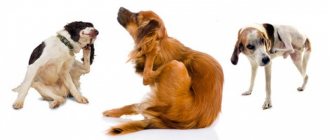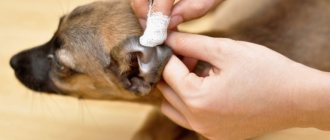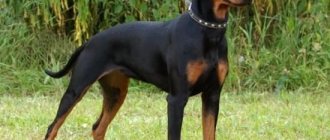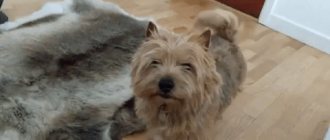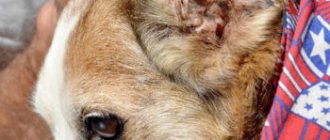4.5 / 5 ( 4 voices)
Seasonal molting in animals is a sign of normal functioning of the body. Some breeds are characterized by year-round hair loss, while others experience hair loss in the off-season. Non-shedding species have been created that are important to cut and trim. But if the process leaves bald spots and causes itching, then this is a cause for concern: the dog is sick.
Possible causes of the disease
The second name for hair loss is alopecia, and this is normal if the animal does not itch and does not lose activity or appetite. The key to a high-quality coat is proper care of your pet and a balanced diet. But the cause of molting can also be a disease. Therefore, there are two types of prerequisites for the occurrence of non-seasonal molting: hormonal and non-hormonal.
Hormonal imbalances
Hormonal imbalances are associated with dysfunction of the thyroid and sebaceous glands . They occur against the background of other serious diseases (due to decreased immunity, the villi become brittle). Or as a result of sterilization (when the release of the sex hormone is reduced, the animal rapidly gains weight; its skin softens, the condition of the hair follicles worsens; the abundance of undercoat growth decreases).
If the cause of alopecia lies in hormonal imbalances, then the first bald patches appear on the neck and chest. Bald spots are symmetrical and gradually spread throughout the body.
Hypothyroidism
Insufficiency of the thyroid gland. More often, older dogs or overweight dogs are susceptible to this pathology. Spaniels, Dachshunds, Airedale Terriers, Doberman Pins, and Setters are predisposed to the disease.
Symptoms of hypothyroidism include:
- Decreased temperature, activity, lack of interest in life;
- Weakness, poor tolerance to exercise training;
- Rapid weight gain;
- Swelling of the muzzle;
- Disturbance of body pigmentation;
- Hair becomes fragile, brittle, faded;
- Alternate hair loss on the back, chest and neck in clumps.
Treatment is based on the administration of hormones, special tablets to stimulate the glands such as Levothyroxine capsules.
In the photo there is a dog with hypothyroidism
Pituitary dwarfism
Characterized by a lack of growth hormone. This disease is genetic, not acquired, and is observed in a small number of puppies. German Shepherds are more often prone to the disease. The only way to check a puppy's predisposition is with a DNA test. Symptoms appear 3-4 months after birth:
- The baby stops developing and growing.
- He develops problems with his teeth and skin (the skin becomes thin, which increases the risk of irritation and dermatitis).
- In addition, the hairs die and fall out before the seasonal molting. This is explained by the fact that puppy fur does not change to adult fur.
The dog in the photo has pituitary dwarfism
Hyperestrogenism
Estrogen is a female sex hormone. The disease involves an excess of it, both in females and males. Causes of appearance: tumor of the testes for males and a cyst (less commonly, ovarian tumor) for females. The only possible treatment is surgery followed by removal of the reproductive organs and complete (or partial) sterilization.
The pathology is manifested by symptoms:
- The fur loses its presentable appearance, actively falls out (first on the sides and stomach symmetrically), no skin inflammation is observed;
- In male dogs, the nipples swell, the testicles descend, the foreskin enlarges and swells (the process of feminization);
- In girls, the loop and halos become swollen;
- Growths may appear on the foreskin;
- The abundance of discharge from the genitals increases.
The dog in the photo has hyperestrogenism
Hypoestrogenism
The disease is the opposite of hyperestrogenism - that is, a lack of estrogen (more often in females). Usually appears after serious diseases of the reproductive system (pyometra, endometritis, mastitis). More common in mature and elderly bitches.
The pathology manifests itself as thinning of the skin, bald patches in the groin, and a general slowdown in hair growth. Usually, the problem is not completely solved; the animal is forced to take artificial hormones for life.
Hypoestrogenism in a dog in the photograph
Non-hormonal reasons
These reasons directly depend on the attentiveness of the owner and the quality of care. If the animal receives proper veterinary care, eats expensive balanced food, is regularly bathed and treated for parasites, the problem of hair loss is unlikely to overtake it.
Some causes of baldness are stress, moving, and vitamin deficiency. There is a concept of pattern alopecia in newborn puppies; usually, the hair is restored without human intervention.
Nutrition
A healthy gastrointestinal system is the key to good condition of skin, coat, claws and teeth. If the diet does not contain enough protein and saturated fats (fatty acids), the coat loses its natural shine, becomes discolored, and the guard hair becomes brittle.
The food should contain a vitamin complex, including copper, mineral salts and B vitamins. Balance is achieved with the help of artificial or natural complementary foods.
Allergy
There are food allergies, irritation from ectoparasite bites and a reaction to emissions in the environment (household chemicals, exhaust fumes, pollen). Depending on the type, symptoms appear:
- Redness and itching that cause anxiety in the pet;
- Hair loss on inflamed areas of the skin;
- Cough, sneezing;
- Swelling of individual parts of the body (limbs, muzzle);
- Increased salivation, secretion of tears or other body fluids;
- Redness of mucous membranes;
- Weeping eczema.
Treatment depends on the irritant. Sometimes it is enough to isolate the dog from the allergen; in difficult situations, antihistamines are administered.
An important article on the topic: “Symptoms and manifestations of allergies in dogs: we figure out what causes them and how to treat them.”
Infections and parasites
The most common problem that causes an animal to lose its fur is ringworm. Fungal diseases or yeast infections appear upon contact with a contaminated object. A similar cause is seborrhea, in which the entire body is covered with scales.
In the warm season, pets are attacked by fleas and ticks . If ordinary ectoparasites can be removed with the help of drops or shampoos, then the Demodex mite (which parasitizes the hair follicles) or scabies will have to be eradicated using a whole range of measures: immunomodulators, ointments, symptomatic medications.
Important articles on the topic:
- “The main types of dermatitis in dogs and their treatment”;
- “Ringworm in a dog: signs and symptoms, photos, treatment”;
- “Skin diseases in dogs: types, symptoms and photos”;
- “What to do if your dog has lichen: symptoms with photos, treatment and prevention.”
Signs of hair loss with treatment recommendations
The cause is diagnosed based on the symptoms that appear. Depending on the source of the problem, treatment is prescribed. The general course necessarily includes isolating the dog from external irritants (ectoparasites, allergens) or getting rid of the root cause (hormonal stimulation). The next step is to treat emerging wounds and inflammations.
The dog's hair is falling out in clumps of bald patches.
This symptomatology is inherent in a fungal infection (often lichen). It rarely brings discomfort to the pet, but bald spots scattered throughout the body do not look aesthetically pleasing, and the exposed skin becomes crusted or blistered.
Such problems are treated under the supervision of a doctor. There are injections for internal treatment of the disease and ointments for external use. During the recovery period, it is necessary to introduce medicinal feed and immunomodulators.
If your fur falls out in winter
When it gets cold, the animal changes its coat to a denser one and grows a thick undercoat, so baldness in winter alarms its owners. Depending on the characteristic symptoms, several possible causes can be identified:
- Infection;
- Vitamin deficiency or allergies;
- Stress, nervous disorder.
Often in winter, owners dress animals in protective overalls. If clothing is made of synthetics and irritates the skin (or rubs), alopecia may occur. Too tight clothes often cause baldness.
The dog itches and the hair falls out
A common symptom of flea infestation . You can diagnose it yourself: insects or their secretions (black sand and dandruff) are visible in the groin and abdomen. Flea bites cause your pet to scratch their skin, which causes hair loss. In this case, treatment against parasites using drops on the withers or other external means is mandatory.
If a dog has demodicosis or scabies, the reason also lies in infestation (but the parasites are too small to see), the diagnosis can only be made by a veterinarian after conducting research: skin scraping, general blood test. In this case, treatment is aimed at restoring the immune system.
Detailed article on the topic: “Demodex canis (Demodex canis, injai, mange) is a harmful mite in dogs.”
Dandruff, flaky skin and hair loss
Seborrhea is the process of secretion and accumulation of a fatty enzyme, which causes severe peeling of the animal's skin. It can be caused by vitamin deficiencies, poor diet or stress. As a result of such irritation, the skin weakens and cracks, which causes secondary infections.
To cure flaking and itching, use special dog shampoos. Although to completely get rid of the symptoms, it is better to conduct an analysis and find out the root cause.
The dog is losing hair on its back
Typically, seasonal shedding starts from the head along the back and ends at the tail. Therefore, if regular alopecia is scheduled, there is no need to worry (even if it started a little earlier). Otherwise, a consultation with a veterinarian is required; without diagnosis, it is impossible to establish the cause.
If hair loss began after introducing a new food product, or using a bathing product, then most likely the hair loss will stop if the pet's contact with these substances is limited.
Around eyes
A similar problem often occurs with an allergic reaction to food. Typically, animals react negatively to chicken, corn, wheat or low-quality ready-made food. But alopecia around the eyes is also affected by infection of the mucous membranes: conjunctivitis, blepharitis, meibomitis (internal stye).
Experienced breeders also know that eyelids become bald when bulbs are eaten by demodicosis. Therefore, it is better to go to the clinic for an accurate diagnosis.
On the neck
If hair falls out symmetrically on the neck and chest, the reason lies in hormonal imbalance . Although Shar Peis and Bulldogs develop alopecia between skin folds in the absence of water treatments and treatment of excess skin. Treatment of hormonal diseases consists of administering special medications, but only under the supervision of a doctor.
What is alopecia?
This is hair loss in animals. It may be associated with the natural change of hair coat - molting, but often takes on pathological forms in which the animal experiences baldness of certain parts of the body, the appearance of ulcers and inflammations, as well as tissue pigmentation. Such individuals often have a “fur coat” that comes out in tatters. Such a symptom almost always indicates serious malfunctions in the body’s functioning - hormonal changes, disruption of the functioning of internal organs, or infection of the pet with parasites.
When such a problem arises, the dog owner needs to remain calm. If he notices moderate hair loss in the spring or fall, there is no need to worry. However, if this process begins in winter and is accompanied by a general deterioration in the dog’s condition, the appearance of islands of bare skin on the paws, face, and stomach, you should consult a veterinarian. In most cases, a specialist is able to cope with such a scourge quickly without consequences for the animal’s health.
What do veterinarians say about this?
Experts assure the importance of vaccinating your pet against demodicosis and lichen, despite the fact that these vaccinations are optional. Infection with a fungus or subcutaneous mite is almost impossible to completely cure, which dooms the dog to lifelong feeding with tablets.
It is important to be examined annually at the clinic to ensure the normal functioning of all organ systems and glands. Then you can safely exclude hormonal imbalances from the list of reasons.
But the most important thing for a dog is careful care. Some breeds need bathing every week, others once a year. This schedule depends on the structure of the coat and skin. The owner must be attentive to changes in the pet’s behavior in order to quickly correct the situation if the first symptoms appear.
Vitamins and preparations for hair restoration
A healthy dog has a beautiful, thick, even coat with bright color and shine. To ensure your pet’s appearance remains impeccable, its cover must be carefully monitored:
- Bath and brush according to breed recommendations;
- Use only animal-friendly products;
- Follow a diet, choosing high-quality products and feeds without allergenic additives.
During the shedding period, be sure to brush your dog daily to get rid of dead hair. Without this procedure, the pores become clogged, which leads to itching and irritation. If any unhealthy signs appear: bald spots, redness, you need to go to the clinic.
Another factor influencing the health of the coat is the sufficiency of the vitamin complex. All puppies and adult dogs need mineral supplementation. If dry food includes the necessary vitamins, then special additives are introduced for natural nutrition.
There are industrial wool growth tablets and nutritional supplements:
- Vit active S-SH (increasing hair density, improving structure; preventing destruction of hair follicles);
- Beafar (vitamin complex for healthy dermis and coat);
- Excel 8 in 1 (combination of garlic and brewer's yeast);
- Varieties of vitamins Canina ;
- Feed molasses and liver, flaxseed oil, brewer's yeast, lamb, whey (vitamins B, H, F);
Prevention of alopecia in dogs
To avoid the occurrence of this disease, it is enough to follow simple general recommendations. They provide:
- Regularly examine your pet's skin. It is advisable to carry it out after clipping or washing your pet. When the first signs of afforestation appear, you should immediately consult a doctor.
- Follow the recommendations for caring for the animal's fur. It must be combed out during the molting period, otherwise it will cause skin inflammation and severe itching, which can cause alopecia.
- Providing the dog with a nutritious diet. Your pet's food should contain a large amount of vitamins and minerals. It is especially important to adhere to this rule during the molting period. If you do not know how to feed your dog to prevent hair from coming out, consult your veterinarian on this issue.
- Timely vaccination of the animal and regular deworming.
- Correct selection of accessories for your pet: collar, leash. You need to purchase only high-quality products that do not put pressure on the dog’s neck and do not rub.
The owner also needs to ensure that the pet does not come into contact with other animals or conflict with them, as it can become infected with dermatological diseases from them. If you follow these simple recommendations, you will not encounter alopecia in dogs.
